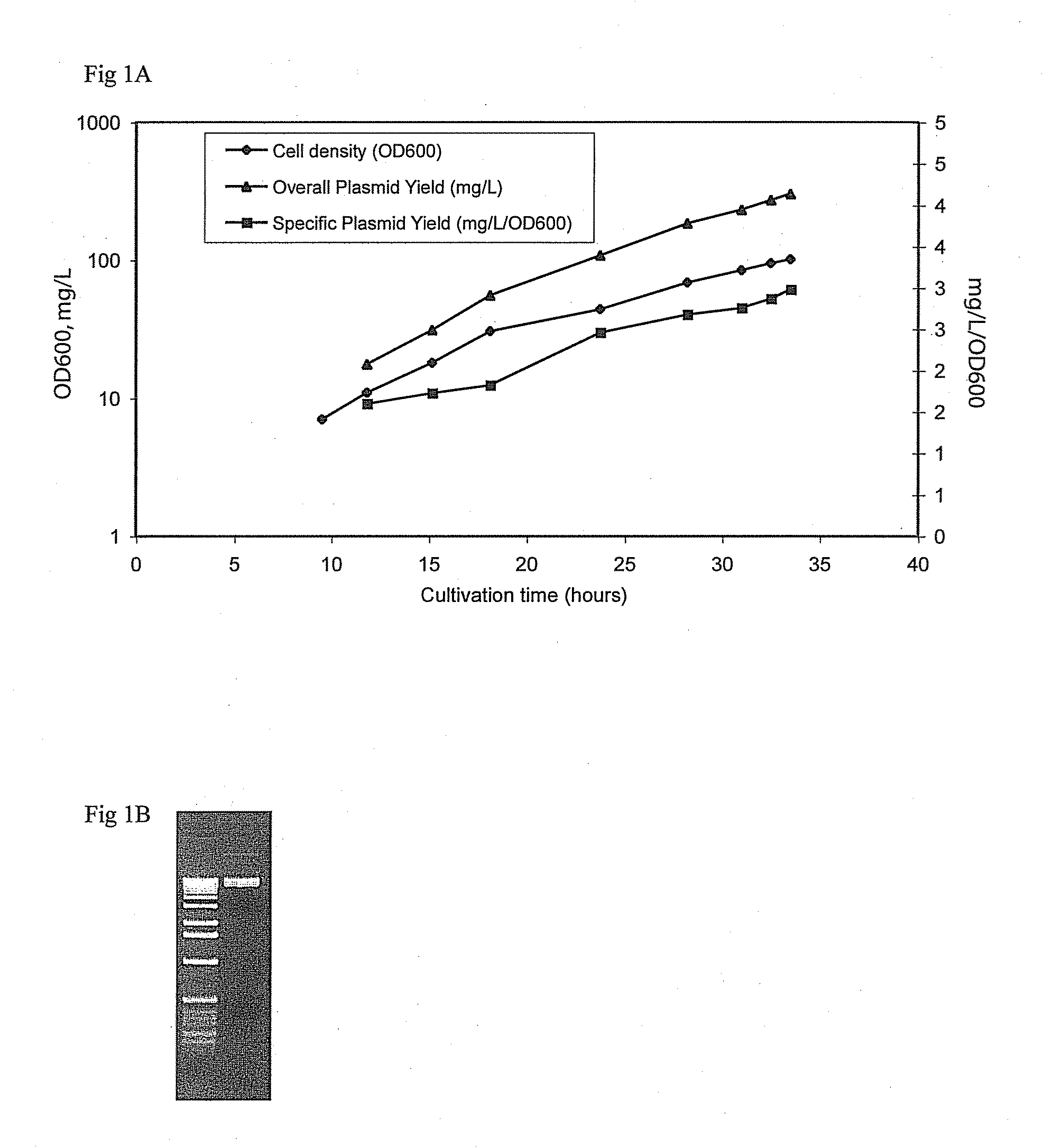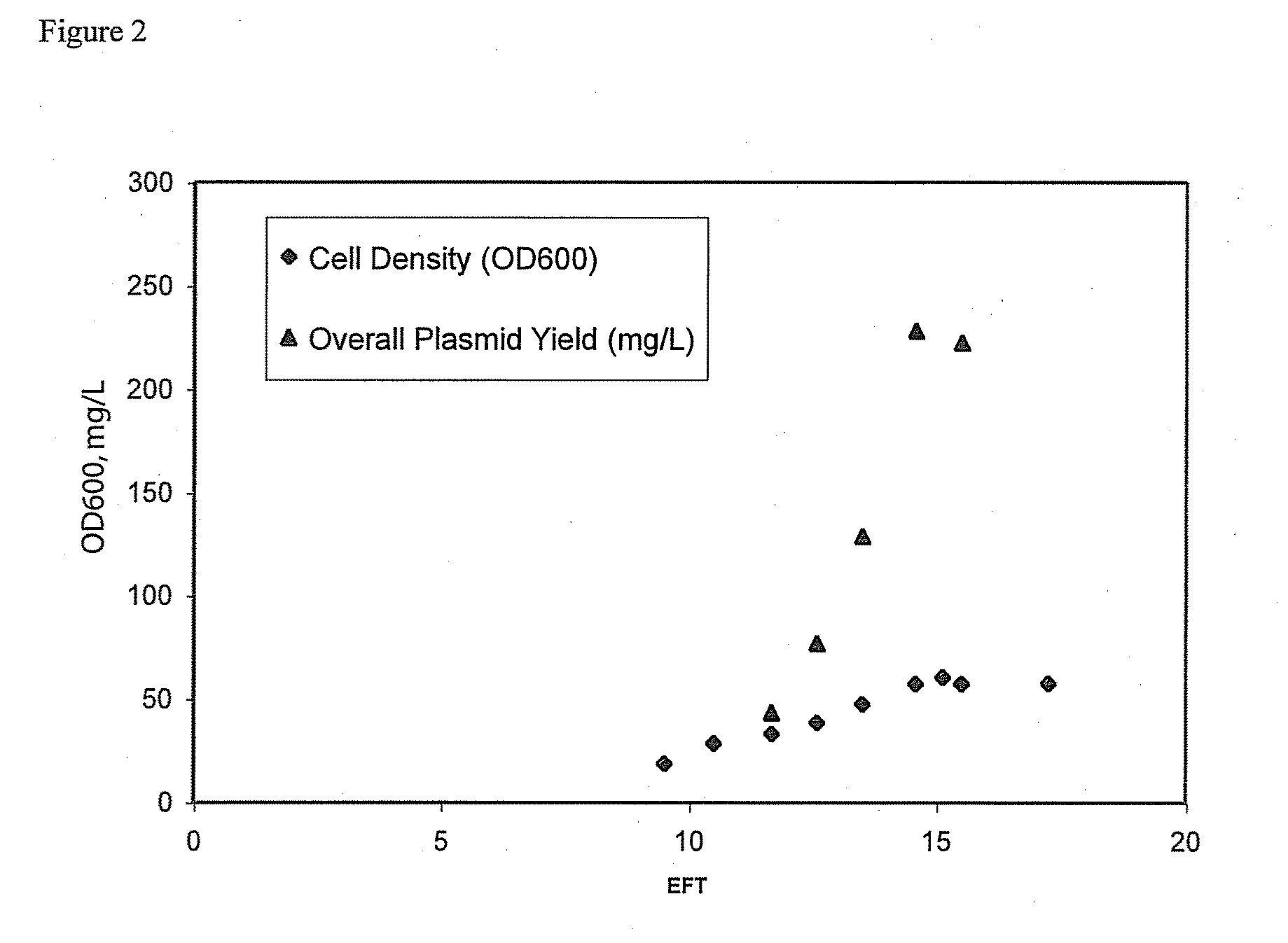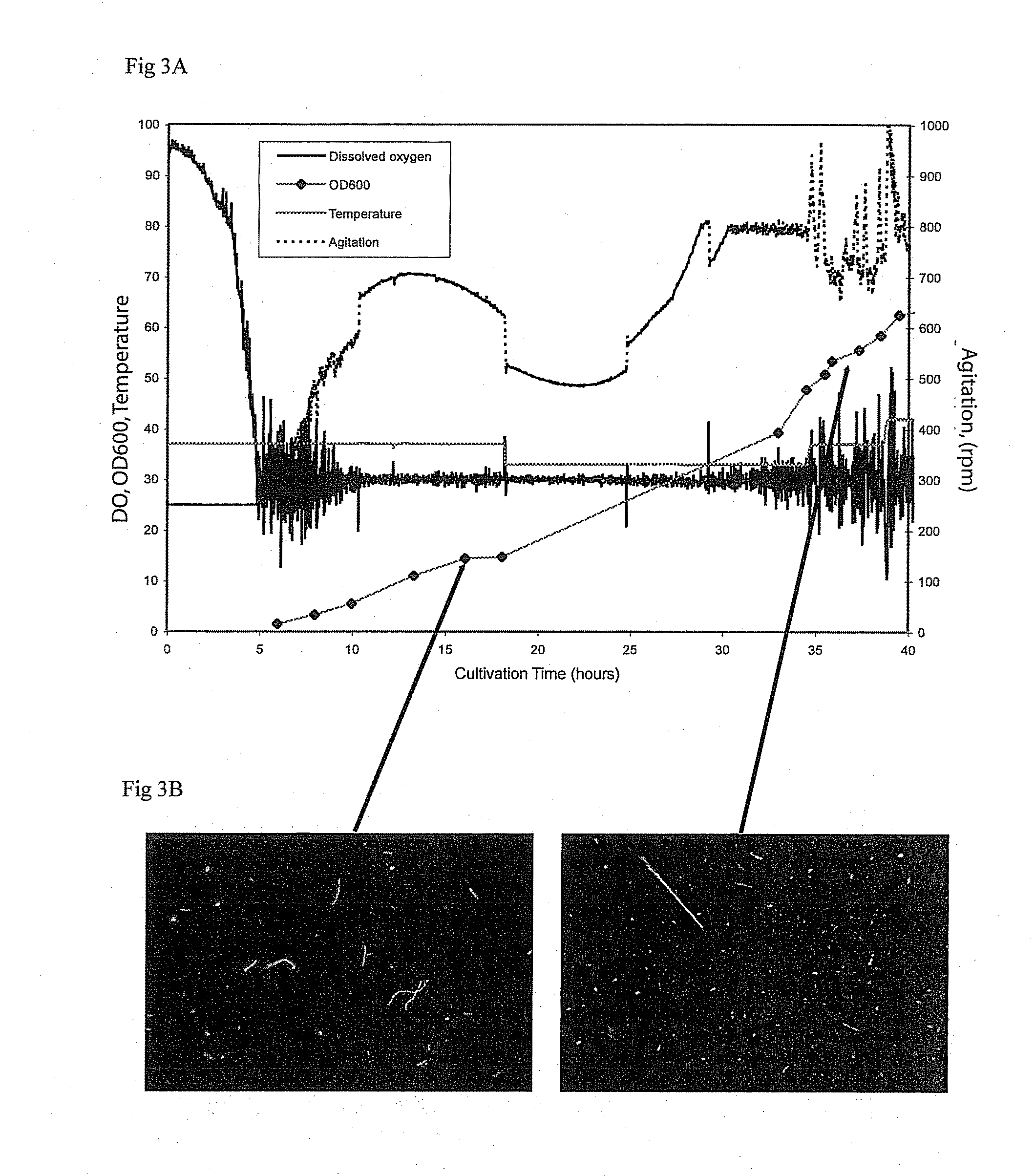Process for plasmid DNA fermentation
a technology of plasmid dna and fermentation process, which is applied in the direction of fertilization, genetic therapy composition manufacture, vector-based foreign material introduction, etc., can solve the problems of undesirable acetate production, unacceptable use of animal products, in particular bovine products, in plasmid manufacturing, etc., to improve plasmid dna quality, improve plasmid dna production yield, and reduce impurities in purified plasmid
- Summary
- Abstract
- Description
- Claims
- Application Information
AI Technical Summary
Benefits of technology
Problems solved by technology
Method used
Image
Examples
example 1
NTC3018 and NTC3019 Fermentation Media
[0072]The following criteria were established for evaluation of an optimized fermentation process fo manufacturing plasmid DNA:
1) High specific yield of plasmid (mg plasmid DNA per g cell mass);
2) High biomass yield;
3) It will retain high degrees of super-coiled plasmid;
4) It will cause minimal problems during downstream processing;
5) It will meet regulatory requirements; and
6) It will retain plasmid structure (e.g. no deletions or other rearrangements).
[0073]Culture media was formulated to support high specific plasmid yield, high biomass yield, and high plasmid quality. The batch fermentation medium was designed to reduce the specific growth rate. The use of a reduced growth rate has been associated with higher plasmid copy number and better plasmid stability. During fed-batch fermentations the growth rate was controlled at 0.12 hr−1 by feeding of the limiting nutrient. The host strain, DH5α, has the endA1, recA, and relA mutations, all import...
example 2
NTC3019 Media Fed-Batch Culture with pBR322-Derived Plasmids
[0075]Fed-batch fermentations were carried out in a New Brunswick BioFlo 110 fermentor at 37° C. pH was controlled by automatic addition of 30% ammonium hydroxide or 10% phosphoric acid. The dissolved oxygen probe was calibrated to 0% by nitrogen gas sparging and 100% with air saturation. The vessel was aerated at 1 VVM and dissolved oxygen was maintained at 30% by proportional-integral control of agitation. At cell densities above about 20 OD600, O2 supplementation was also required to maintain 30% saturation.
[0076]Seed cultures were started from single isolated colonies inoculated into LB plus 50 μg / ml kanamycin and grown at 37° C. At mid-exponential phase (0.5-1.5 OD600) the seed cultures were used to provide 1% inoculums for the fermentor.
[0077]During fed-batch cultures a semi-defined feed nutrient was added according to a carbon limiting exponential feeding strategy. Briefly, an initial amount of carbon substrate is co...
example 3
NTC3018 Medium Batch Fermentation with High-Copy Gene Therapy Plasmid
[0088]NTC3018 medium batch culture with pUC origin plasmids was performed. The following pUC origin containing plasmids were utilized:
1) pW2.0, a derivative of pUC19 that has an altered polylinker sequence.
2) pMaxGFP
3) pEGFP-C1
[0089]Batch fermentations were carried out in a New Brunswick BioFlo 110 fermentor at 37° C. pH was controlled by automatic addition of 30% ammonium hydroxide or 10% phosphoric acid. The dissolved oxygen probe was calibrated to 0% by nitrogen gas sparging and 100% with air saturation. The vessel was aerated at 1 VVM and dissolved oxygen was maintained at 30% by proportional-integral control of agitation. At cell densities above about 20 OD600, O2 supplementation was also required to maintain 30% saturation.
[0090]Seed cultures were started from single isolated colonies inoculated into LB plus 50 μg / ml kanamycin or 100 μg / ml ampicillin and grown at 37° C. At mid-exponential phase (0.5-1.5 OD600...
PUM
 Login to View More
Login to View More Abstract
Description
Claims
Application Information
 Login to View More
Login to View More - R&D
- Intellectual Property
- Life Sciences
- Materials
- Tech Scout
- Unparalleled Data Quality
- Higher Quality Content
- 60% Fewer Hallucinations
Browse by: Latest US Patents, China's latest patents, Technical Efficacy Thesaurus, Application Domain, Technology Topic, Popular Technical Reports.
© 2025 PatSnap. All rights reserved.Legal|Privacy policy|Modern Slavery Act Transparency Statement|Sitemap|About US| Contact US: help@patsnap.com



